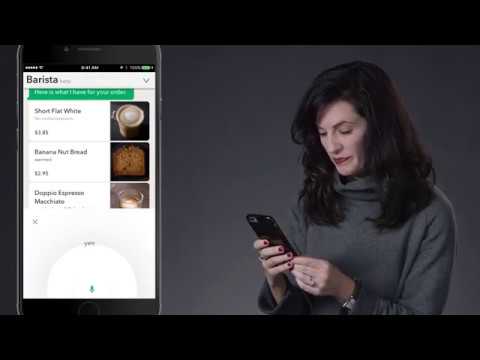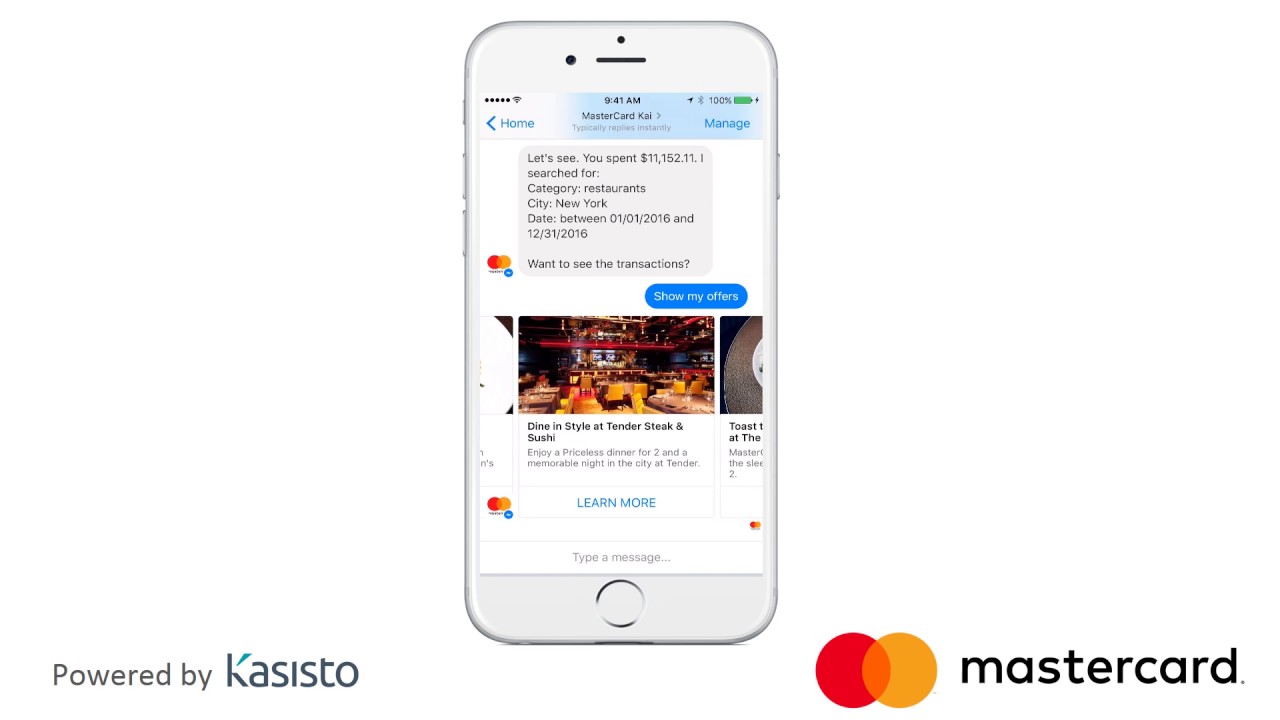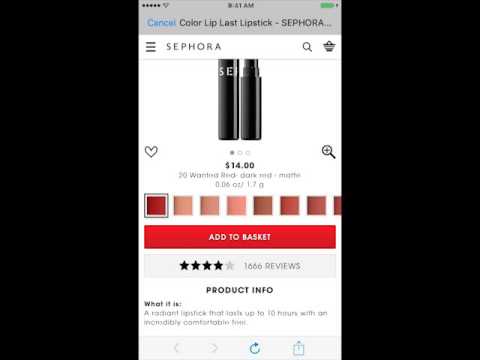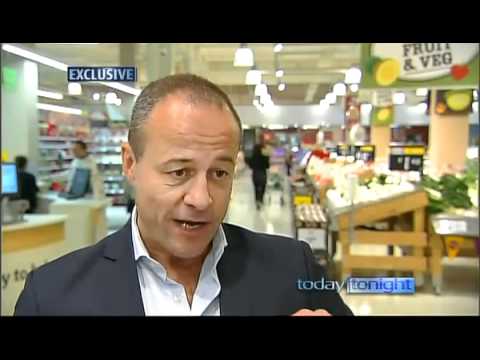18 tactics to close more sales
Looking for tactics to close more sales? Then this article is for you!
18 tactics to close more sales
Sales tactic #1 TALK BENEFITS, NOT FEATURES
Nobody wants to read technical details: how much horsepower, how many inches, how many colours, how many hours etc. Instead, turn those features into benefits for your customer. The smartphone is so slim you can fit it into your shirt pocket. The camera is so powerful you can take a high-resolution photo of Betelgeuse, one of the brightest stars in the night sky. This pair of jeans is so comfortable you can dance the tango in them.
Sales tactic #2 OVERCOME ANY OBJECTIONS YOUR PROSPECTS MIGHT HAVE
Get to know your prospects inside out. Make a comprehensive list of every objection you and your team members have heard from prospects during sales calls and find the right answers to overcome them. They might touch on subjects like price, costs, time to implement your solution, better alternatives and so on. Ask questions to discover the underlying issue. You could start with a price objection (‘It’s too expensive’) and discover, by asking follow-up questions, that a payment instalment plan would solve the objection.
Sales tactic #3 ALWAYS ASK FOR NEXT STEPS
Don’t let the conversation die out; keep talking to the prospect. To this end, never finish your emails with ‘Let me know if you are interested’ or ‘Click here to learn more’. Ask for the next steps. (“Are you free Friday for a quick chat?”).
Sales tactic #4 BECOME AN EXPERT ON PROBLEM-FINDING
For decades, sales professionals focused on providing prospects with the solutions they asked for and striving to show them why their solution was the best. This approach could work in some cases and fail in others. Why? Because prospects are experts in problems, not solutions. Henry Ford: “If I had asked people what they wanted, they would have said faster horses.” Turn from problem-solving to problem-finding. Identify the hidden problems of your customer to help him move forward with the sale.
Sales tactic #5 NURTURE YOUR AMBIVERSION
Ambiversion is a combination of introversion and extroversion. It’s time to get rid of the myth of strong extroverts being better at selling. Sales experts show that the personality type most effective in sales and persuasion is the ambivert. Ambiverts are more effective and better sales professionals because they have the qualities of both introverts and extroverts: they know when to push and when to listen.
Sales tactic #6 MASTER POSITIVE SELF-TALK
Research shows that finding arguments is more powerful and more effective than positive self-affirmations. Shift from positive self-affirmations to positive self-talk by turning it into a question: Can I do this? If so, how?
Sales tactic #7 LIST 1 OR 2 MINOR NEGATIVES
Build credibility and prompt persuasion by listing one or two minor negatives following a list of positives related to your product. This increases transparency and trust. And trust is the stepping stone to closing the sale.
Sales tactic #8 REMOVE FRICTION
If you want your prospect to do something, make it easy, really easy for them to do it. Don’t ask them to go through three pages on the website and five steps before they can see the benefits or the How it works video. Spend less time changing minds and more time making their choices easy to make. Reduce friction by trying to align the easy behaviour with the desired behaviour.
Sales tactic #9 FIND THE RIGHT MOTIVATION
If you know your prospect’s profile by heart, you know the right motivation behind their decision to buy. Position your solution in line with their core motivation. Examples of motivation that you can add to influence people’s behaviour: family, money, status, more time for hobbies or family, career, getting things done faster and easier.
Sales tactic #10 LEVERAGE THE POWER OF WORD-OF-MOUTH
Sales research shows that word-of-mouth has a big impact on behaviour, it generates more than twice the sales of advertising. The goal is not to make a piece of content go viral, it’s to influence one person to tell another person.
Sales tactic #11 ASK ‘WHO DO YOU KNOW THAT I SHOULD KNOW?’
When you realize the conversation with the prospect is not going where it should, end the talk only after asking for a referral with this key question: ‘Who do you know that I should know?’
Sales tactic #12 APPLY SOCIAL CURRENCY CUSTOMER PROFILE-BASED
Social currency refers to the actual and potential resources from presence in social networks and communities, including both digital and offline. What a CEO cares about is different from what a work-from-home parent cares about. So take this into account when drafting your sales pitch.
Sales tactic #13 FIND THE INNER REMARKABILITY
Every product is unique at least in one way or has something surprising, novel or interesting about it. Find the inner remarkability and show it.
Sales tactic #14 USE THE LOSS AVERSION COGNITIVE BIAS
The Loss aversion cognitive bias describes the tendency to prefer avoiding losses to acquiring equivalent gains. Use the loss aversion bias to your advantage by stating what the prospect stands to lose if they don’t make the purchase. It’s powerful and it will surely get the attention of your prospect.
Sales tactic #15 USE THE FRAMING EFFECT COGNITIVE BIAS
The framing effect cognitive bias is when people decide on options based on whether the information is presented from a positive view or a negative view; e.g. as loss or gain. So are prospects attracted to gains if you present them in the correct light? Let’s say you sell enterprise software. Your product is amazingly efficient: it reduces complaints by 95%. How do you showcase this result to gain the prospect’s interest: 95% fewer complaints per month or 95% more satisfied customers per month? As per the framing effect bias, the latter choice is the right one.
Sales tactic #16 USE THE ZERO-RISK COGNITIVE BIAS
Zero-risk bias is a tendency to prefer the complete elimination of one particular risk over options that could eliminate more risks overall. When given the choice between reducing one risk from 5% to 0% or more risks from 55% to 50%, research finds that people go predominantly with the first choice. To benefit from the zero-risk bias approach, present your prospect with two choices. In the first choice, show how your product eliminates one of the prospect’s problems entirely while in the second choice, your product solves a number of your prospect’s pain points by a considerable margin.
Sales tactic #17 BE A FACILITATOR
Become the focal point and hub for connecting others with good contacts and information. When people are looking for something and you happen to know how to connect them with the source of what they’re looking for, you will become a valuable resource to them. There’s no mistake that those people that are able to connect other people with other people not only make great brokers but are also great salespeople.
Sales tactic #18 COLLECT TESTIMONIALS
A good testimonial can prove to be one of the most powerful sales tools you can use. Get them by talking to existing customers and asking them how things are going. When they give you some good information, ask if you can use it for a testimonial. Remember that a good testimonial is a before-and-after description.
Do you want to master your sales game?
Join The Ultimate Sales Strategy MasterCourse™ with Craig Wortmann, Founder & Academic Director Kellogg Sales Institute and CEO Sales Engine!
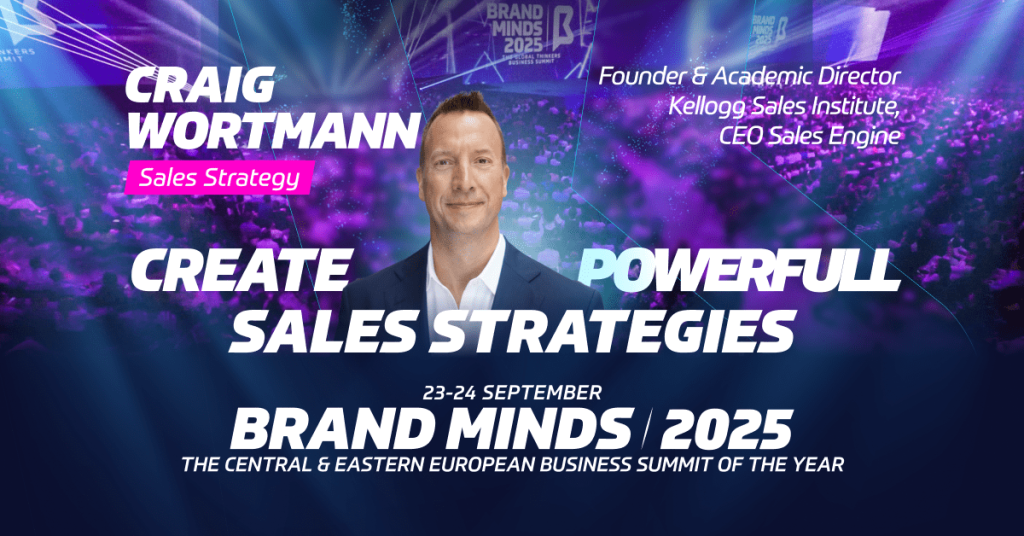
How to Use Chatbots to Increase Sales
Making a sale today means communicating with a very demanding and digitally savvy customer. Customers expect businesses to deliver tailored experiences and meet customers’ demands with the right information at the right moment, as this Google report states. We are living in an on-demand environment!
One business rule of thumb is to go where your customers are.
But where do customers go when they want to talk to each other?
Latest statistics may surprise you: they turn to messaging apps instead of email, sms or phone.
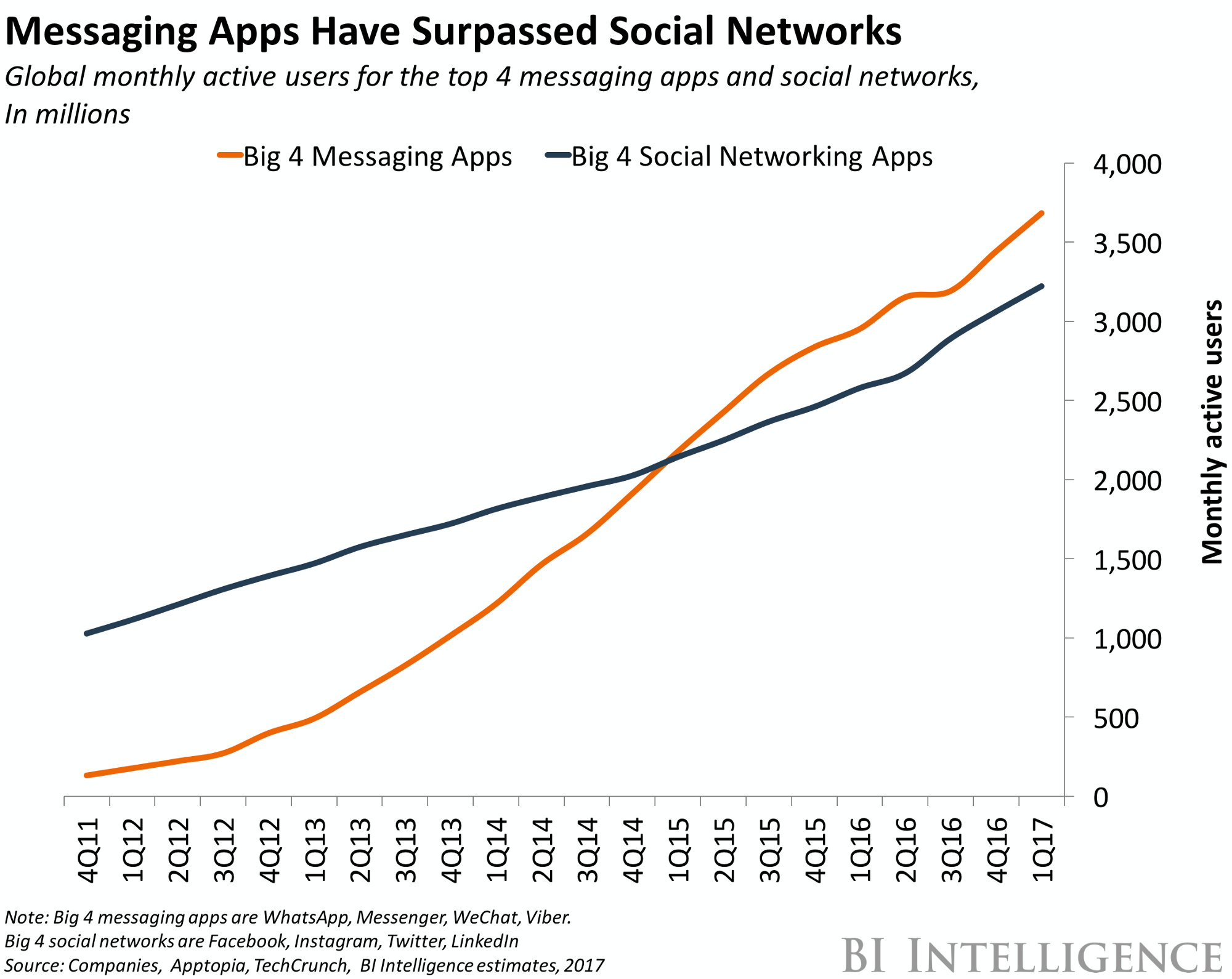
image source: BI Intelligence
This article will help you understand more about chatbots, how to use them to increase sales and discover 3 examples of brands using chatbots.
Chatbots – what are they?
Chatbots are bots that businesses can program to achieve various objectives. Chatbots are software that interacts with users, answers queries, manages particular requests etc. Chatbots are powered by AI and NLP technology which allows chatbots to talk to the user in a conversational format. Also chatbots can assist the user with graphics like images, buttons, menus etc.
The 2016 Facebook Insights Report reveals 5 very interesting statistics regarding customer behaviour:
- Over 1 billion people use Messenger to connect with businesses every month;
- 63% of business owners said messaging from customers has increased over the past 2 years;
- 56% of customers would rather message a business than call for customer service;
- 61% of customers like personalized messages from businesses;
- 47% of shoppers are open to buying items from a bot.
As the percentages mentioned above show, communication has moved to messaging apps. From a sales perspective, talking to a person is a great way to gather information about your business’s buyer persona, his or her interests and likes, where this person is in your company’s sales funnel.
Your customer service executives can handle a few dozen of customers’ inquiries a day during business hours. But can they accommodate a few hundred a day? How about answering messages outside the 9-5 program or during the weekend?
That’s why chatbots can become a very powerful and useful tool for businesses.
Chatbots – what can they actually do?
Chatbots have become increasingly important as brands are using messaging applications to reach consumers.
Here is what businesses can use chatbots for:
- 24/7 customer support;
- Keep track of your store’s inventory;
- Inform customers when a product they were searching for is back in store;
- Assist with managing your online store;
- Collect customer data: interests, previous purchases, searching history etc;
- Help identify qualified and unqualified leads;
- Send marketing or informational materials;
- Help move leads through the sales funnel.
How can your business grow by using chatbots?
Chatbots are revolutionizing the customer experience and helping businesses achieve marketing and sales objectives at a lower cost than traditional advertising.
Your business can benefit from using chatbots as follows:
- Lead generation & collection
A study conducted by Sprout Social found that brands ignore almost 89% of messages that require a response; the consumers expect a reply within four hours, but they receive it after a 10-hour wait. Enough to make them lose interest and turn to other brands.
- Retargeting for each step of your sales funnel
Chatbots store a buyer’s history; this means that whenever that particular buyer visits the store again, the chatbot can suggest products with the caption “You may also like this”.
- Product recommendations
Is your business using email messages to upsell and cross-sell? You may want to switch to messaging apps instead of email as a tool for delivering your messages.
HubSpot made an experiment to find out which tool was better for their business: Facebook Messenger or the good-old email?
What they found was really surprising: the message delivered through Messenger had an average open rate of 80% and an average click-through rate of 13%!

hubspot.com
3 examples of brands using chatbots
My Starbucks barista:
- Order your coffee by text or voice;
- The chatbot tells you how much your coffee costs and when it is ready.
Mastercard Facebook Messenger:
- Can help the user break their expenses on categories (how much the user spent on coffee for example), stores (McDonalds’s, Starbucks etc.), cities etc.
- The user can setup alerts;
- The user can instruct the chatbot to make payments.
Color Match for Sephora Virtual Artist via Facebook Messenger:
- The bot helps users match their lipstick shade to outfits;
- The user sends her selfie photo and try on any lipstick in Sephora store;
- The user can browse products in Sephora store and make purchases inside the bot app.
Benefits of using chatbots for your business:
- Improve conversion rates;
- Increase open rates and click-through rates;
- Decrease cart abandonment;
- Increase customer satisfaction;
- Boost traffic and sales;
- Optimize buyer personas;
- Efficiently push customers down the sales funnel;
- Drive brand awareness.
Expert’s statement
We asked Vlad Mustiata (CEO & Founder) and Madalin Preda (CMO & Founder) at DEQOD & ChatX:
Are chatbots “absolutely necessary” or “we can do without”?
This is what they told us:
As chatbots developers, we truly believe that they will have a big impact in the future, maybe even bigger than the smartphone. All the industry is looking forward for the first chatbot or virtual assistant that will be used by people on a daily basis, but that requires two things:1. Further development of the technology (Natural Language Processing / Natural Language Understanding, Voice Recognition, Sentiment analysis )and2. Finding use-cases where chatbots can provide a better User Experience than what a Mobile App or Website can offer now.If you want to be one step ahead of the competition, we recommend to start using chatbots as one of your ‘pocket aces’.
5 things you might not know about Julian Treasure
With regularly appearances in the world’s media (TIME Magazine, The Times, The Economist, BBC, etc), Julian Treasure is also famous for his books How to be Heard and Sound Business.
- His TED talks on conscious listening and powerful speaking have collectively been viewed almost 50 million times; they are respectively the 95th and 8th most-watched TED talks of all time.
2. At the Sound Agency, him and his team help clients such as Harrods, Nokia, BP, Marks & Spencer, Helm Bank, Waldorf Astoria and many major shopping centers across Europe to grow their business by optimizing the sounds they make to increase sales, customer satisfaction, staff productivity and brand value. The agency specializes in creating effective and appropriate organic soundscapes for branded spaces.
3. He has a Bachelor degree in Economics, from the University of Cambridge, UK.
4. Julian’s love of sound stems from his early experience as a musician. He was a drummer for British band The Transmitters, amongst many others, and played on their second Peel Session in 1981.
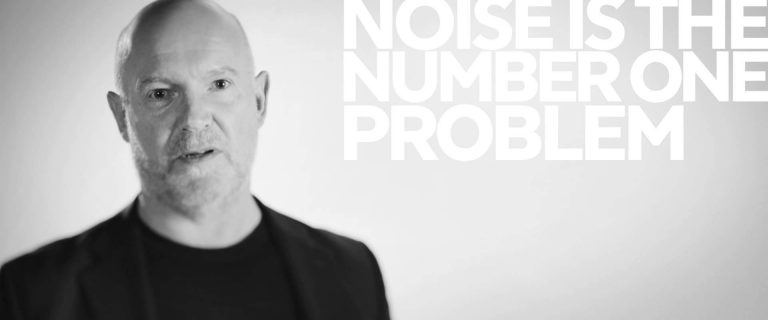
5. Before The Sound Agency, Julian spent 30 years working in advertising and publishing. He founded, grew and sold contract magazine publishing agency TPD. Nowadays, Julian splits his time between London and Orkney, where he lives with his fiancee and youngest daughter.
The power of smell as a tool in the marketing strategy
Businesses looking to sniff out a commercial opportunity have been aware of its power for a long time. According to the Sense of Smell Institute, people are able to recognize approximately 10,000 different odors and are able to recall smells with 65% accuracy after a year, in contrast to only 50% of visuals after three months.

source: Stuff
Martin Lindstrom found that brand impact increased by 30% when more than one sense is engaged and by a whopping 70% when three senses are integrated into the brand message. Scents have an immediate and compelling effect as they are directly linked to the brains limbic system which is the part of the brain responsible for our memories and emotions. Therefore scents go beyond our rational perception and have an ultimate impact on our emotions.
Moreover, smell is the most powerful and emotional of all the senses. By using scent, brands are able to connect with consumers on a deeper emotional level, resulting in a more memorable experience. Scent can attract new customers, increase sales, heighten value perception, and expand brand recognition and customer satisfaction. A scent has the ability to influence behavior and trigger memories almost instantaneously. When smell is combined with other marketing cues, it can amplify a brand experience and establish a long lasting connection with consumers.
The right scent can depend on several factors. Research by Eric Spangenberg, the dean of the college of business at Washington State University, who has been researching the effect of smell on customer behavior since 1996, has found that it affected everything from cultural norms, gender and appropriateness to the product. “Another area where we’ve seen effects is if you’ve got a scent that’s congruent with a season. So, for instance, shopping and the seasonal effects of scent – people expect Christmas to smell like cinnamon or something like that,” he says.
Comparing this with a scent more appropriate for Easter, he found positive effects for the seasonal smell and negative effects for the incongruous one. “Using the correct smell is crucial. For businesses across many sectors, getting their fragrances right could mean the difference between the lingering stench of failure or the sweet smell of success,” writes The Independent UK.
“Smell has been a somewhat neglected sense in terms of being used to help differentiate brands, so scents are one of the final frontiers for marketers,” explains Maureen Morrin, professor of marketing at Temple University’s Fox School of Business and coauthor of a research study on the effects of ambient scent on consumer preferences and choice behaviors. “Hotels have created their own proprietary scents that are not just emitted in public spaces, such as the lobby and workout rooms but also often integrated into their toiletries. Not only is the odor pleasant, but it also comes to have unique associations with the brand over time,” she added, quoted by Sarah Bergen for Lodging Magazine.
Because sense of smell is tied to the side of the brain that processes memories and emotions, the appropriate use of scent can positively impact the perception of a brand, customer loyalty, and even the attitude of the staff. “We’re where music was 15 years ago. You wouldn’t walk into an established retailer today without some sort of music playing, but that wasn’t the case 15 or 20 years ago. You can walk into a beautifully designed space, and it’s rendered meaningless if there’s a bad smell or an absent smell,” said Roger Bensinger, exec VP of AirQ by Prolitec, which works with Abercrombie & Fitch, Hard Rock Hotel & Casino and Giorgio Armani, among others, quated by AdAge. ”
The researchers hypothesized that the degree of complexity of a scent may affect the consumer’s ability to process that olfactory information. The less complex a scent, the easier it is to process, and the greater its influence on associated attitudes and behaviors. This should translate into more favorable consumer responses to the retail environment and associated products.
